|
|
|
Helping Your Child Learn Math - June
1999
Activities
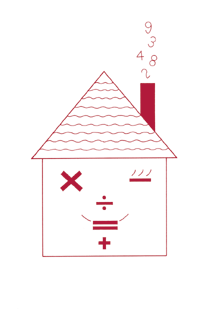 Your
home is full of opportunities to explore math with your child and, at
the same time, build his or her self-confidence and understanding of mathematical
ideas. This is a chance for you and your child to "talk math"
that is, to communicate about math while discovering relationships between
numbers. Being able to describe mathematical patterns and relationships,
such as those between "addition and subtraction" or "odd
and even numbers," is important to later success in math. Your
home is full of opportunities to explore math with your child and, at
the same time, build his or her self-confidence and understanding of mathematical
ideas. This is a chance for you and your child to "talk math"
that is, to communicate about math while discovering relationships between
numbers. Being able to describe mathematical patterns and relationships,
such as those between "addition and subtraction" or "odd
and even numbers," is important to later success in math.
The activities in this section are intended to be enjoyable
and inviting and use items that can be found in your home. While doing
the activities, keep in mind that an understanding of math and a sense
that math is enjoyable will help children develop skills that they will
need for success their entire lives.
Fill It Up
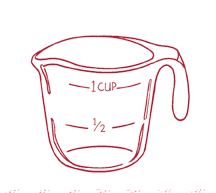 Grades
K-2 Grades
K-2
What you'll need
A measuring cup, 4 glasses of equal size, and water
What to do
- Pour water at different levels ( 1/3 cup, 1/2 cup, 3/4
cup and 1 cup) in each glass. Put the glasses next to each other. Ask
your child: Are all the water levels the same or different?
- Ask your child questions to encourage comparison, estimation, and
thinking about measurement. Which glass has more water? Which has less?
How many glasses of water do you estimate it will take to fill the container?
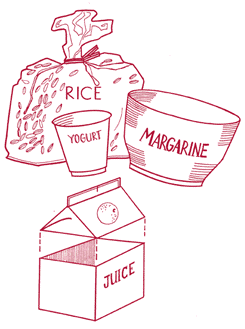
- Pour more water into one of the glasses to make it equal to the amount
of water in another glass. Move the glasses around so that the glasses
that have the same amount of water are not next to each other. Ask your
child: Which glasses do you think have the same amount of water?
- As your child begins to understand more, do activities using different-shaped
containers that hold the same amount of a substance (water, rice, and
popcorn kernels). This helps your child see comparisons, as well as
the various capacities of different-sized and -shaped containers.
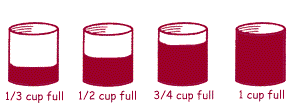
| Parent Pointer |
 |
Filling empty containers provides opportunities to
explore comparisons, measurement, volume, estimation, and geometry. |
Fractured Fractions
Grades K-3
What you'll need
Clear container, masking tape, marker, measuring cups ( 1/2, 1/3,
or 1/4 cup measure), uncooked rice or popcorn kernels, and water
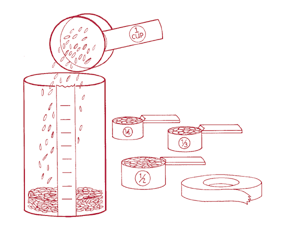
What to do
- Have your child stick a piece of masking tape straight up one side
of the clear container from the bottom to the top.
- For younger children, use a 1/2 cup measure. For older children,
use a 1/3 or 1/4 cup measure. Choose the unit of measure and
fill the measuring cup. Then let your child pour the substance from
the measuring cup into the clear container. Continue to pour the same
amount of the substance into the container.
- As each equal amount of the substance is poured, mark the level on
the container by drawing a line on the tape. Write the cup size or appropriate
fraction on each line. The fraction for one-third cup would be 1/3.
- Follow this procedure until the container is full and the tape is
marked in increments to the top of the container.
- Fill the container again and again using different measures each
time. Ask your child "thinking" questions.
- How many whole cups do you think this container will hold? How
many 1/2 cups, 1/3 cups, or 1/4 cups do you think the container
will hold?
- How many 1/2 cups equal a cup?
- How many 1/4 cups equal 1/2 cup? A cup?
- How many 1/4 cups equal 3/4 cup?
| Parent Pointer |
 |
This hands-on activity explores whole numbers and
fractions by using measurements your children can see. Your children
also will learn to guess or estimate quantities. |
Money's Worth
Grades 1-3
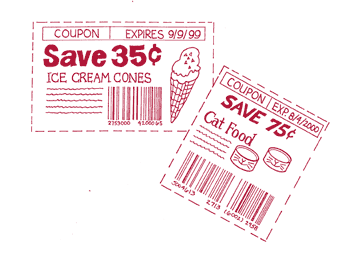 What
you'll need What
you'll need
Coins, grocery store coupons, and a pencil
What to do
- Coin clues. Ask your child to gather some change in his or
her hand without showing what it is. Start with amounts of 25 cents
or less (for first-graders, you can start with pennies and nickels).
Ask your child to tell you how much money and how many coins there are.
Guess which coins are being held. For example, "I have 17 cents
and 5 coins. What coins do I have?" (3 nickels and 2 pennies).
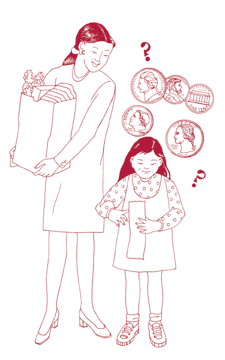
- Clip and save. Cut out grocery store coupons and tell how
much money is saved with coins. For example, if you save 20 cents on
detergent, say 2 dimes. Ask your child what could be purchased using
the savings from the coupon. A pack of gum? A pencil? How much money
could be saved with 3, 4, or 5 coupons? How could that money be counted
out in coins and bills? What could be purchased with those savings?
A pack of notebook paper? A magazine? How much money could be saved
with coupons for a week's worth of groceries? How would that money be
counted out? What could be purchased with those savings? A book? A movie
ticket? What percentage of the original price is the coupon worth?
- Count the ways. How many ways can you make 10 cents, 25 cents,
30 cents, 40 cents, or 50 cents? You can help your child add the coins
in various ways to get different answers.
- Try playing the coin games with coins from another country.
| Parent Pointer |
 |
Coin games help children to learn the value of coins.
They also teach counting, addition, subtraction, and multiplication.
Coupons can help teach children money management, as well as subtraction
and percentages. |
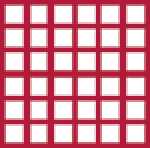
In the News
Grades K-2
What you'll need
Newspaper, scissors, pencil or crayon, glue, and graph paper
What to do
- Newspaper numbers. Help your child look for numbers 1 to 100
in the newspaper. Cut the numbers out and glue them in numerical order
onto a large piece of paper. For children who cannot count to 100 or
recognize numbers that large, only collect up to the number they do
know. Have your child say the numbers to you and practice counting up
to that number.
Or
- Collect only numbers within a certain range, like the numbers between
20 and 30. Arrange the numbers on a chart, grouping all the numbers
with 2s in them, all the numbers with 5s, and so on.
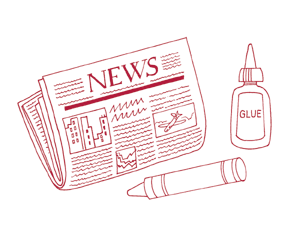
- Counting book. Cut out pictures from the newspaper and use
them to make a counting book. Page 1 will have one thing on it, page
2 will have 2 things that are alike, page 3 will have 3 things that
are alike, and so on. All the things on the each page have to be the
same. At the bottom of each page, write the number of items on the page
and the word for the item. Have your child tell you a story about what
is on the page.
| Parent Pointer |
 |
This newspaper activity helps children read and understand
numbers and charts. |
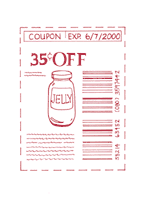
Newspaper Search
Grades 3-5
What you'll need
Newspaper, calculator, pencil, paper, and graph paper (can be hand-drawn)
What to do
- List it. Give your child the grocery section of the newspaper
in order to make up a list of foods that will feed the family for a
week and also meet a budget of a certain amount of money. Have your
child make a chart and use mental math or a calculator to figure the
cost of a few items. If the total for the groceries is more than you
have budgeted for, talk about which items can be eliminated. Could the
list be cut down by a few items or by buying less of another item? What
will best serve the needs of the family?
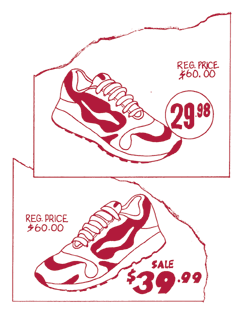
- Shop around. Have your child search for advertisements in
the newspaper for an item they have been wanting, such as a piece of
clothing or tennis shoes, in order to find the lowest price for the
item. After your child finds the best buy, have him or her compare the
best buy to the rest of the advertised prices. Are this store's prices
lower for everything or just items in demand?
- Highs and lows. Have your child search the newspaper for
daily temperatures and create a graph showing weekly trends. Ask your
child for the differences in temperature from day to day.
| Parent Pointer |
 |
This activity helps children see how much math is
used in everyday life. It also helps in the variety of ways in which
math is used to tell a story, read a timetable or schedule, plan a
shopping list, or study the weather. |
Treasure Hunt
Grades K-2
What you'll need
Large container, buttons, screws, bottle caps, old keys, anything else
you can count, and graph paper (can be hand-drawn)
What to do
- Find a container to hold the treasures.
- Sort and classify the treasures. For example, do you have all the
same-sized screws or keys? How are they alike? How are they different?
- Use these treasures to tell addition, subtraction, multiplication,
and division stories. For example, if we share 17 buttons among 3 friends,
how many will we each get? Will there be some left over? Or if we have
3 shirts that need 6 buttons each, do we have enough buttons?
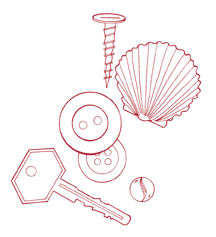
- For older children, you can organize the treasures by one characteristic
and lay them end to end. Compare and contrast the different amounts
of that type of treasure. For example, there are 3 short screws, 7 long
screws, and 11 medium screws. There are 4 more medium screws than long
ones. Make a simple graph showing how many of each type of screw there
are. This activity may also provide an opportunity to talk about fractions:
7/21 or 1/3 of the screws are long.
| Parent Pointer |
 |
Organizing the "treasures" in one's house
provides practice in addition, subtraction, multiplication, and division.
Children can also graph data on shapes and sizes. |
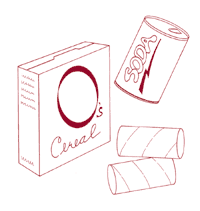
Squash That Box
Grades 4-5
Ever notice what happens when you flatten cereal boxes,
tin cans, or other 3-dimensional shapes for recycling? Or do you ever
wonder how they design and make all those interesting containers you find
in the department store? Mathematicians call the flat, unfolded designs
of 3-dimensional shapes "nets."
What you'll need
Small cardboard boxes, aluminum cans, and cardboard tubes from toilet
paper or paper towels 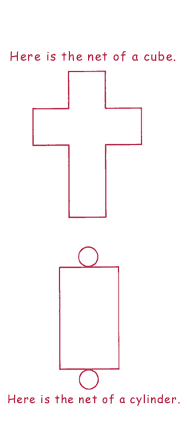
What to do
- Explain to your child that when we recycle materials, we need to
flatten them. Ask him or her why (to save space). Ask your child to
imagine what shapes will be created when you flatten the boxes or cans.
Some people crush cans, which is not the same as flattening. When you
take apart a cylinder, you have two circles for the ends and the flat
cylinder makes a rectangle. Cut a cardboard tube lengthwise. What shape
do you see (a rectangle)? What will a cereal box look like if you carefully
unfold it and cut along the edges?
- Unfold a cardboard box, without showing your child the original box.
Ask your child to imagine what the original box looked like. What shape
will it be when it is put back together? How will the ends look?
- Have your child trace all the faces of a box or other 3-dimensional
shapes by laying every side and top and bottom on the paper to be traced.
Ask the child the names of the drawn 2-dimensional shapes.
- Have your child study a box. Then see if your child can draw a net
(the unfolded version) of the box. Unfold the box to see how closely
the drawn net corresponds to the actual net. What would the net of a
pyramid look like? What would the net of a cube look like?
| Parent Pointer |
 |
Recognizing 2-dimensional shapes in 3-dimensional
objects and visualizing shapes are essential skills in fields as varied
as architecture, manufacturing, medicine, and design. |
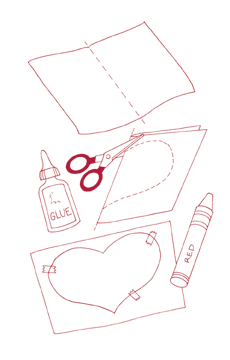 Simply Symmetrical
Simply Symmetrical
Grades 1-5
What you'll need
Paper, pencil, marker or crayon, magazine pictures, scissors, and glue
What to do
- Explore your house for symmetrical designs. See how many your child
can find. Look at wallpaper, floor tiles, pictures, bedspreads, and
appliances.
- Cut out a magazine picture that is symmetrical. Cut it along the
line of symmetry. Paste one half of the picture on the paper. Have your
child draw the missing half.
- Write your child's name in big block letters, then write your name.
Which name has more letters with lines of symmetry? How many letters
have one line of symmetry? How many of each letter have two? (a B has
one line, an H has two). Does anyone have a name with all symmetrical
letters? (BOB is one.) Can any letter be turned upside down and still
look the same? (YesH, I, O, S, and X are symmetrical around a center
point.) Go through the alphabet, making a list of the letters that look
the same on both sides and those that look different.
- Fold a sheet of paper in half lengthwise. Have your child draw half
of a circle, heart, or butterfly from top to bottom along the fold on
each side of the paper. Help your child cut out the shapes that were
drawn. Unfold the paper to see the symmetrical figure. Have your child
color and glue the full figure on another sheet of paper to display
the design.
| Parent Pointer |
 |
A shape can be symmetrical when two parts of it are
exactly alike. This exercise helps young children develop an understanding
of symmetry and a sense of geometric patterns. |
Tracking Time
Grades 2-5
What you'll need
Clock or watch, newspaper, blank paper, and graph paper (can be hand-drawn)
What to do
- Together with your child, keep track of the time he or she spends
watching television as well as doing homework. Make a table listing
the 7 days of 1 week. Keep two columns, one for television and one for
homework. At the end of the week, see if together you can make a graph
comparing the two different activity columns.
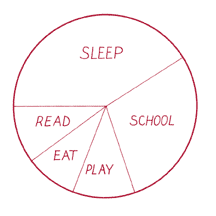
- While watching television, make a chart showing how much time in
every hour is used for commercials compared to how much time is used
for the actual show. Do this for every half-hour of television you watch.
Then make a bar or pie chart showing the two amounts. Time the minutes
carefully.
- Together with your child, keep track of how he or she spends time
in one 24-hour period: time spent sleeping, eating, playing, reading,
and going to school. Measure a strip of paper that is 24 inches long.
Let each inch represent 1 hour. Color in the number of hours for each
activity, using a different color for each activity. When finished,
make the strip into a circle and place it on a blank piece of paper.
Trace around the circle. Then make lines from the center of the circle
to the end of each color. Your child has just made a circle (pie) chart
of how he or she spends 24 hours. Compare this with how other people
in your family spend their time.
| Parent Pointer |
 |
Statistics includes collecting information, analyzing
it, and describing or presenting the findings in an organized way. |
|
|
|


